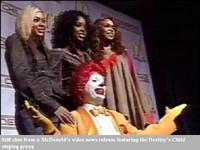Produced in broadcast news style, VNRs relay the news of a product launch, medical discovery, corporate merger, new strategies or markets directly to television news decision-makers. They decide if and how to use the video and audio material - in full or in edited form. Most major television stations in the world now use VNRs, some even on a regular basis.
So what is the problem?
These video clips are 1) indistinguishable from traditional news clips and 2) are sometimes screened unedited by television stations. If the original producers or sponsors – the companies and organizations that pay for production and distribution – are not identified, the viewer perceives it as a news item.

The problem started in April 2004 when the Department of Health and Human Services (HHS) put out a VNR praising the benefits of the new Medicare bill. The PR professional was featured as the spokesperson signing off with “In Washington, I’m (full name) reporting”.
This resulted in a spate of articles - The New York Times, , The Wall Street Journal, Adweek, PRWeek, Advertising Age, Broadcasting & Cable and other publications all addressed the issue of Video News Releases (VNRs), Satellite Media Tours (SMTs) and broadcast PR.
The FCC joined the debate. Its commissioner, Jonathan S. Adelstein, gave a speech warning against video news releases and so-called experts, from chefs to celebrities, who appear on news shows to endorse particular products without disclosing they are being paid by marketers for their efforts.
So how can a marketer or PR practitioner handle a VNR properly?
1) Treat it as a press release – make it truthful and to the point
2) Make sure you identify the sponsoring company or organization
3) Make sure you have legitimate and compelling spokespersons – an expert should be an expert!
4) Select a reliable and ethical VNR producer and distributor
5) Make sure that TV stations airing the VNR identify the source
6) Make sure that you include unique footage
7) Make sure you have your (local) facts and statistics in place
No comments:
Post a Comment